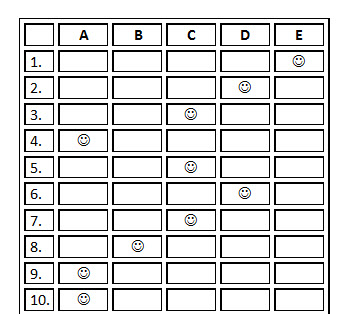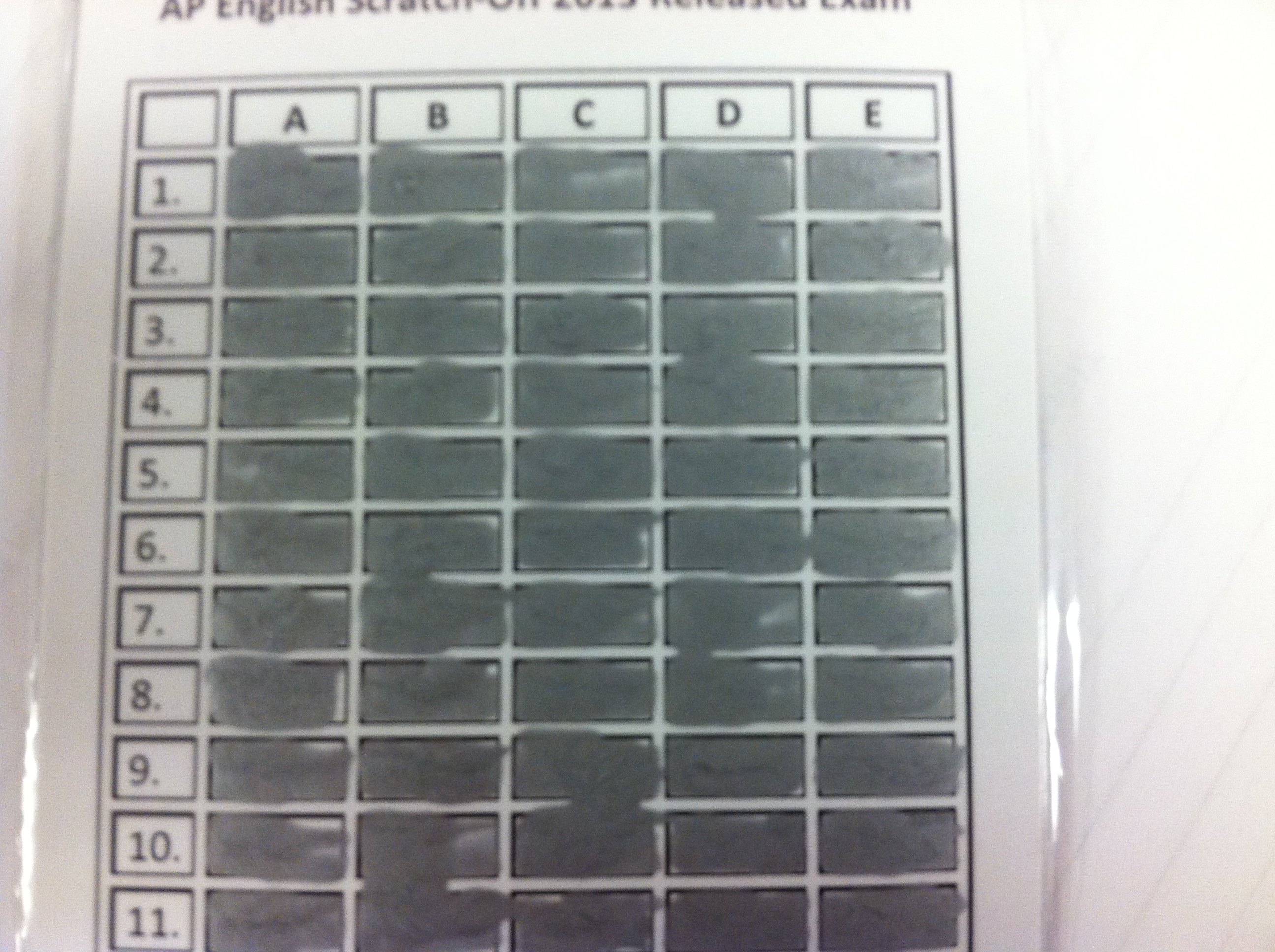Thursday was a good day! Scratch that – pun intended, as you will see in a moment. Thursday was a great day!
Recently, on the PsychTeacher Listserv that I participate in, there was a thread about Team-Based Learning. I was not familiar with this college-level instructional practice that has students working in teams and pushes them toward in-depth analysis and discussion. I was intrigued,
so I watched the video that was shared on the listserv. It was 12 minutes long, but well worth the time. You can watch the video here: Team Based Learning: Group Work That Works.
I was so eager to learn more that I purchased Team-Based Learning in the Social Sciences and Humanities: Group Work that Works to Generate Critical Thinking and Engagement by Michael Sweet and Larry K. Michaelsen, and started reading it over spring break. One of the ideas mentioned in the book and the video is using scratch-off cards in assessment. Instead of using a scantron or a clicker, students receive a lottery-like card and use a coin to scratch off what they believe to be the right answer after they come to a group consensus. I knew this was a strategy that I could use with my AP Psychology and AP English students to practice the level of thinking required for the multiple choice questions on the upcoming exams.
I googled “make your own scratch-off cards” and found that indeed there were instructions for creating scratch-off tickets. The directions are available as step-by-step videos on YouTube, craft projects on Pinterest, and on all sorts of websites.
I started by printing an answer card where the correct answer contains a smiley face. Then I laminated them on our school laminator with black construction paper on the back so that students would not be able to see through the cards. (If you do not have access to a laminator, you can just use clear tape to cover the answer boxes and glue them to darker paper on the back.)
The painting of the squares was a bit tedious. I realize now that I made them too small to tape off individually, so I had some sloppy edges. When I do this again, I’ll be sure to make larger boxes. I painted the squares; it took at least three coats and spot touch-ups to be sure that the smiley faces were no longer visible through the paint.
I made two cards, one card each for the two sections of AP English that I have right now. On Thursday, when students arrived, I first passed out the poem without any multiple choice questions. (We used the first poem featured on the released AP English Literature Exam 2013.). I told students that they would be taking a group quiz on the multiple choice questions over this poem, but that I would not lead discussion nor would I answer questions or participate in their conversation. They would have to determine meaning together. After individual reading and marking up of the poem, they consulted with a partner and then spoke together as a group about the poem. I then passed out the multiple choice questions and followed the same pattern: they completed individually, discussed with a partner, and then turned to the whole group discussion. Each class selected one trusted individual to be the designated scratcher of the card with the express understanding that he or she could not scratch until the group agreed on the answer. I placed that student up front with the card under the document camera so that everyone could experience the scratch-off.
And that’s when a good day became a great day! My seniors had excellent, insightful, and discerning conversations that demonstrated the depth of thinking that I hope they have as they head off to college. They argued about the denotations and connotations of words. They had aha moments when they saw someone else’s interpretation. They supported their thinking with specific references and subtle cues from the poem. And they did all of this with respect for each other and while hearing out everyone’s opinions. They even had fun, as you can hear in the Vine I posted to Twitter.
AP English doing multiple choice scratch-off day! Right answer! Good job, people! @CAPS_CHS #aplitchat https://t.co/pZNe0Oeadu
— Janet Neyer (@JanetNeyer) April 17, 2014
Both classes got perfect scores on the multiple choice questions, but what was far more valuable was the depth and intensity of conversation. This was one of many Team-Based Learning activities that I think can make a difference in the level of thinking and discussing that take place in my classes. Next year, I plan to incorporate the TBL ideas from the beginning and I expect that will get us to college-level discussions even sooner.



